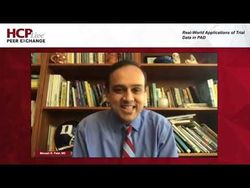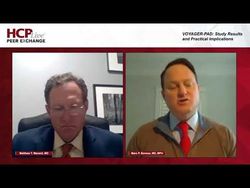Advances in the Management of Peripheral Arterial Disease - Episode 3
Economic Burden of PAD and Community Awareness
Transcript: Deepak L. Bhatt, MD, MPH: Marc, what about the economics of all of this? PAD [peripheral artery disease]—there’s a lot of data out there that show that it’s associated with an enormous burden in terms of economics. What are your thoughts on that?
Marc P. Bonaca, MD, MPH: It’s a great question, Deepak, because cost is an important factor. I think the cost in PAD really reflects the natural history of the disease. For patients with atherosclerosis, there are costs associated with coronary events and with stroke. But really, the driver of cost is related to limb morbidity. As you heard from Matt, these patients come in for repeat interventions. Usually their first intervention is not their last; it’s just the beginning of a program. That means these folks are coming back for a lot of care—for ultrasounds, for imaging, and for repeat revascularizations. The drivers of cost, if you look into PAD populations, are predominately limb related. Those are particularly important outcomes that are unrelated to, of course, their coronary disease or other outcomes. It’s an important issue in this population, occurring at very high rates.
Deepak L. Bhatt, MD, MPH: Those are really great points. Part of the problem with PAD is awareness. I always talk about a lack of awareness among cardiologists, but really, it’s even greater in the primary care physician population, where there’s a lot of confusion and a lack of awareness, such as confusion with arthritis or natural aging and that sort of thing.
Perhaps we could and should do a better job of getting the word out to patients, just so they’re aware that symptoms in their legs they might attribute to aging or arthritis could in fact be peripheral artery disease. It may be worthwhile mentioning it to their physician, and then hopefully that physician—typically their primary care physician—knows to think about PAD. Maybe that’s part of it. Mike, you’re extremely active on social media. At this point you’ve got hundreds of thousands of followers, and many of them are health care professionals. But a lot of them are just regular folks. Do we as physicians need to do more to get the word out and say, “PAD is out there; sometimes it’s silent, but it’s always bad”?
C. Michael Gibson, MD, MS: I think the 2 of you hit the nail on the head when you said that some people think, “It’s just part of aging.” I don’t think that’s the case. People think, “Well, I just can’t move around as much anymore. My legs hurt.” They may mistake PAD for arthritic symptoms or just getting older. You make a great point, Deepak, that we need to distinguish that this is not necessarily part of the aging process and that some interventions can be done. There were some campaigns out there in direct-to-consumer advertising that said, “It could be PAD.” We need to get back to that and really educate the public about PAD more.
Deepak L. Bhatt, MD, MPH: When it comes to heart attack, there are all sorts of public campaigns, and it’s the same with stroke. Of course, one can argue how successful they are. If you think about symptom-to-balloon time in MI [myocardial infarction], for example, it really hasn’t budged despite all those campaigns. Nevertheless, those campaigns are out there, and they raised some degree of awareness. I think we can probably do more in PAD.
Transcript Edited for Clarity



